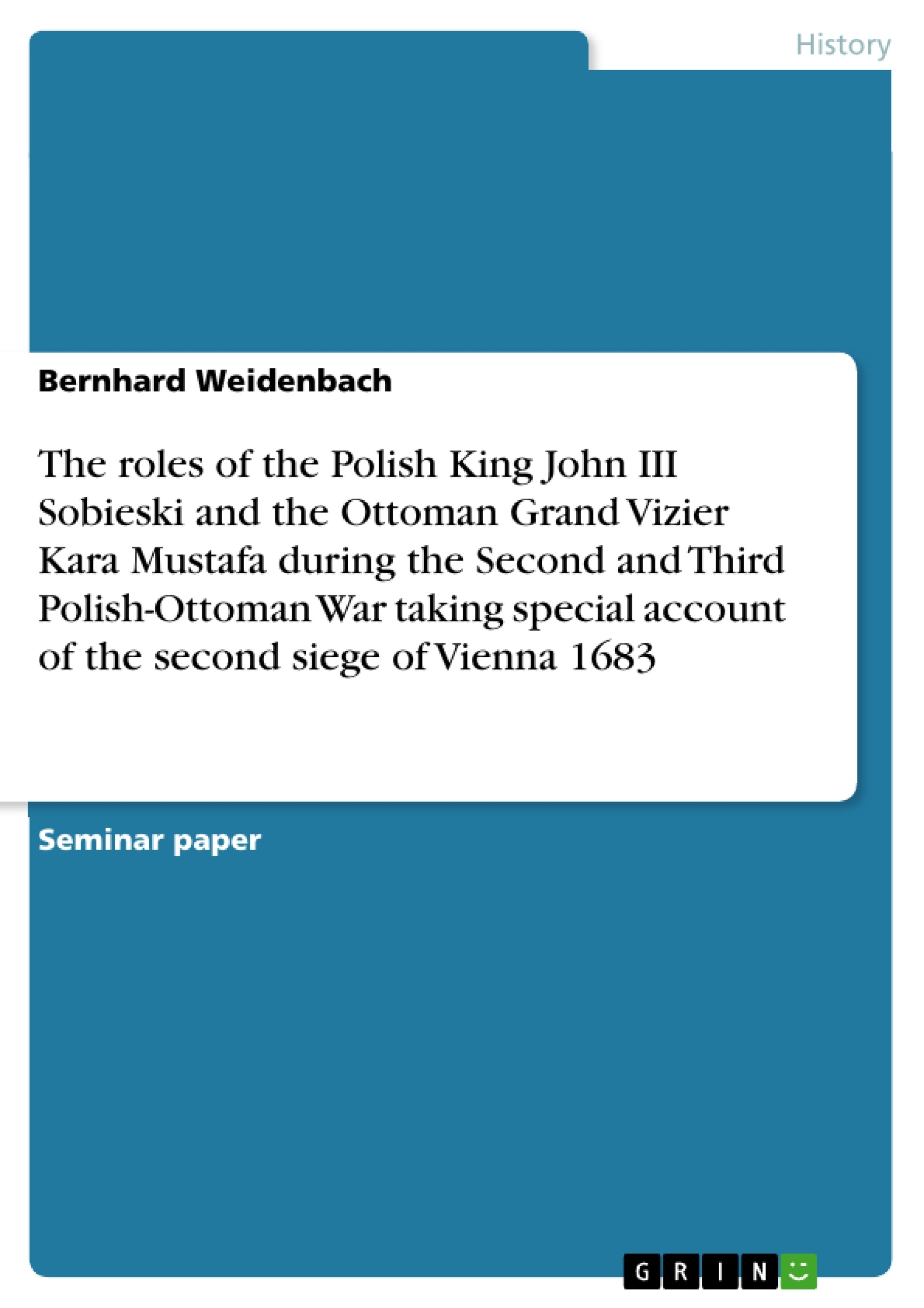In the conflict around the (second) Siege and Battle of Vienna, two antagonist leaders stuck out (among others) and are stressed out within the paper. On the one hand this is the Polish King John III Sobieski, who rushed to Vienna with a ‘multinational’ European army to relief the city and on the other hand this is the Ottoman Grand Vizier Kara Mustafa, who for his rushed to Vienna before – with an army that was possibly not less ‘multinational’ than the Sobieski’s ones. The historic relevance of these both figures and their opposing conduct, perception and legacy is the topic of this paper.
Content
1 Introduction, sources and state of research
2 Historical background and alignment
3 The antagonists: John III Sobieski and Kara Mustafa
3.1 John III Sobieski and his reign; Inner-polish developments
3.2 Kara Mustafa
4 The Battle of Vienna 1683
4.1 Ottoman and Habsburg preparations and the beginning Siege of Vienna
4.2 Sobieski's relief for the sieged Vienna
5 Consequences and remembrance
5.1 In general
5.2 John III Sobieski
5.3 Kara Mustafa
6 The siege of Vienna: A religious war?
7 Conclusion
8 Literature
- Quote paper
- Bernhard Weidenbach (Author), 2014, The roles of the Polish King John III Sobieski and the Ottoman Grand Vizier Kara Mustafa during the Second and Third Polish-Ottoman War taking special account of the second siege of Vienna 1683, Munich, GRIN Verlag, https://www.grin.com/document/900927
-

-

-

-
Upload your own papers! Earn money and win an iPhone X. -

-
Upload your own papers! Earn money and win an iPhone X. -

-
Upload your own papers! Earn money and win an iPhone X. -

-
Upload your own papers! Earn money and win an iPhone X. -

-
Upload your own papers! Earn money and win an iPhone X. -

-
Upload your own papers! Earn money and win an iPhone X. -

-
Upload your own papers! Earn money and win an iPhone X. -

-
Upload your own papers! Earn money and win an iPhone X.

